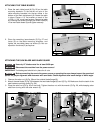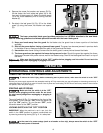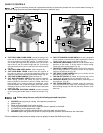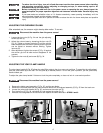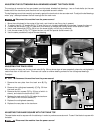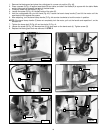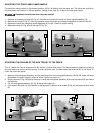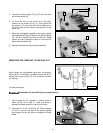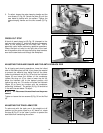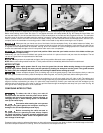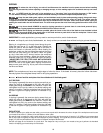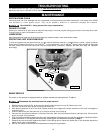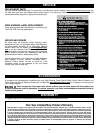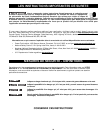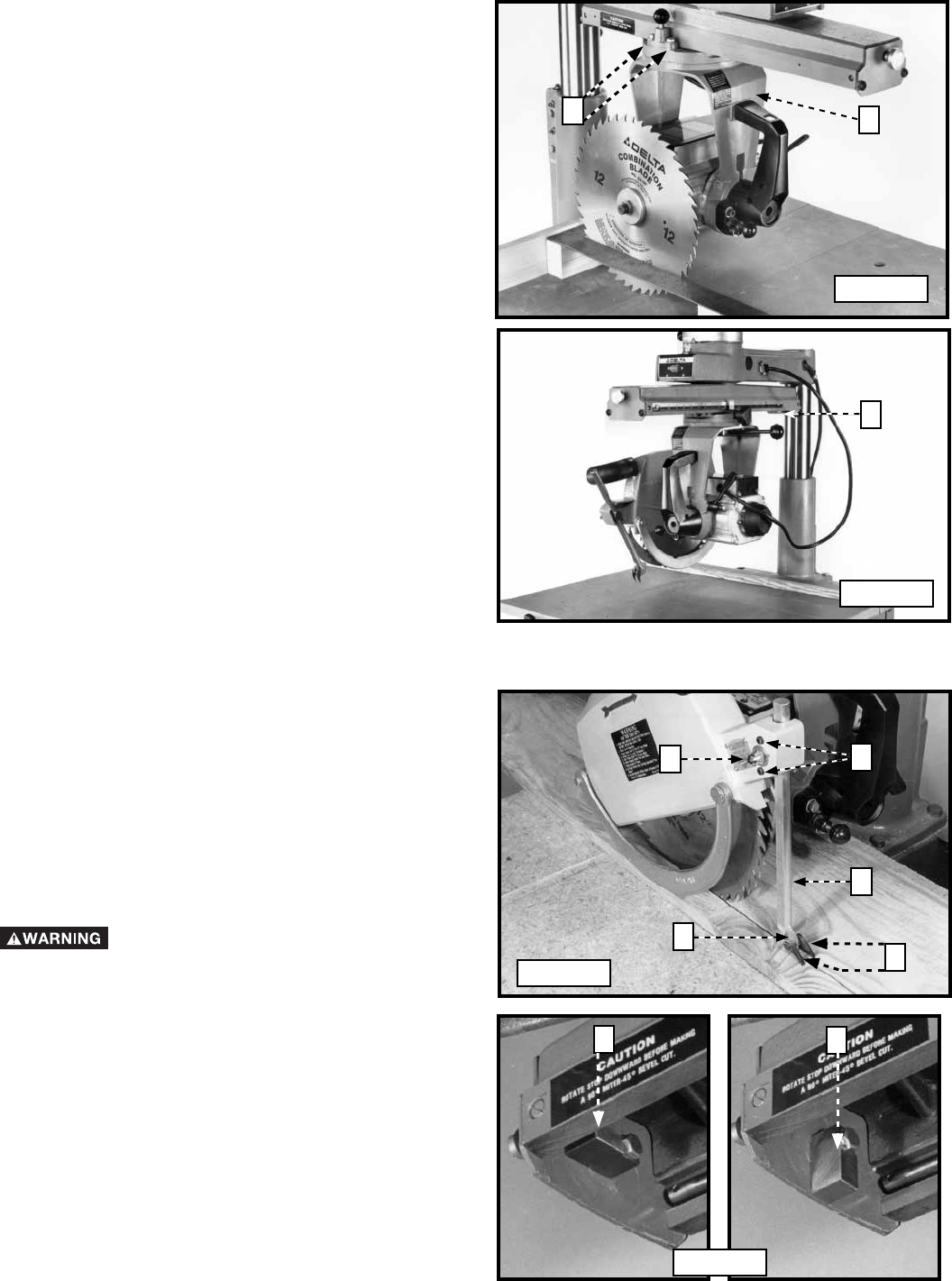
22
3. To adjust, loosen the yoke-clamping handle and the
two screws (C) Fig. 54. Swivel the yoke (D) until the
saw blade is parallel with the square. Tighten the
yoke-clamping handle and the two screws (C) Fig.
54.
CROSS-CUT STOP
A block of wood placed at (B) Fig. 55 (clamped to the
track arm with a small “C” clamp) will prevent unnecessary
travel of the cutting-head on the track arm. This is
especially useful when performing repetitive operations.
Clamp the block of wood to the right side of the track
arm at a position which will stop the cutting-head travel as
soon as the saw blade cuts through the workpiece.
On all ripping and plowing operations, lower the infeed
side of the blade guard so that it just clears the material
to prevent the material from being lifted off the table.
Lower the kickback rod (A) Fig. 56 so that the kickback
fingers (B) are below the surface of the workpiece.
Loosen the wing nut (C) to raise or lower the rod (A).
Move the kickback rod to the desired position and
tighten the wing nut. This action will allow the kickback
fingers (B) to come into contact with the workpiece,
preventing “kickback.” The splitter (D) Fig. 56 should be
in line with the saw blade. To adjust:
Disconnect the machine from the power
source!
Tighten or loosen the two screws (E) Fig. 56 on the Rod
(A).
ADJUSTING THE TRACK ARM STOP
To make cuts with the track arm in the straight cut-off
position and the motor tilted for a 45° bevel cut, rotate
the stop (A) Fig. 57 to the "down" position to prevent the
saw blade from contacting the column.
Fig. 54
D
C
B
ADJUSTING THE BLADE GUARD AND THE ANTI-KICKBACK ROD
Fig. 55
Fig. 56
Fig. 57
C
E
A
D
A
A
B



